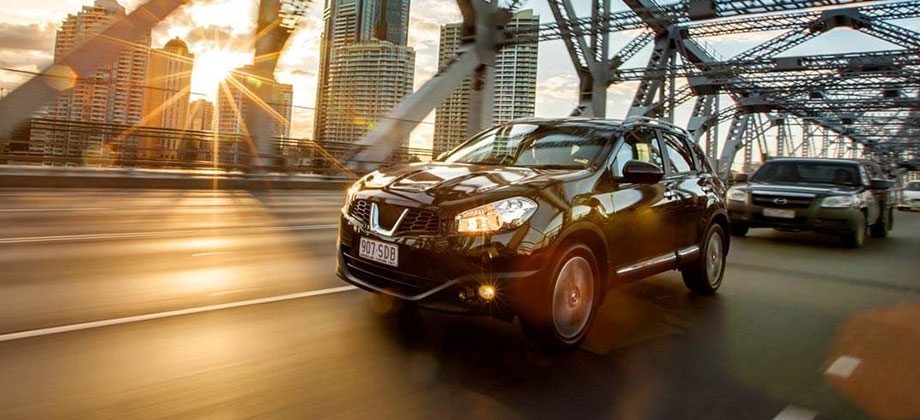Drug driving
Research suggests that those who use drugs and drive have a similar crash risk to drivers with a blood alcohol concentration of between 0.1 and 0.15 (CARRS-Q 2008, p1).
Since December 2007 Queensland Police have been able to undertake random roadside saliva testing for illegal drugs (Queensland Transport 2009, p1).
The saliva samples are tested for the presence of THC (the active ingredient in cannabis), Methylamphetamine (‘speed’ or ‘ice’) and MDMA (the active ingredient in ‘ecstasy’) (Queensland Transport 2009, p1). These are believed to be the drugs most commonly identified in the bodies of drivers and riders involved in fatal crashes (Queensland Transport 2008, p14).
The introduction of roadside drug testing in Queensland and other jurisdictions has been an important development in road safety, especially considering drug driving is believed to be an increasing problem and with one 10-year evaluation of Australian road crashes estimating that one quarter of the drivers killed in road crashes tested positive to drugs other than alcohol (CARRS-Q 2008, p1).
While there has been progress made with regard to enforcement against drug driving with the 2007 introduction of random roadside drug testing for some illicit drugs, the RACQ believes that the testing program needs to be expanded so that drivers can be tested more frequently.
RACQ also believes that more work still needs to be done to educate drivers about the dangers of driving under the influence of drugs – especially legal over-the-counter/prescription medication – and that a means for testing for the presence of these types of drugs (that can affect driving ability) needs to be investigated, because both legal and illegal drugs have the potential to increase the risk of a crash or alter a driver’s behaviour (Queensland Transport 2006, p9).
Collection and recording of offence and crash data in relation to drug use also needs to be of a high standard, to help paint a clearer picture as to the prevalence of drug driving in Queensland.
Advice for motorists:
- Prescription and non-prescription drugs can affect your vision, mood, decision-making skills, muscles and coordination.
- When starting a new course of medication, ask your doctor or pharmacist about the effects it may have on your driving.
- Driving while adversely affected by medication is not an excuse for careless driving, and can result in penalties.
- Mixing drugs or combining drugs with alcohol can seriously affect your ability to drive safely.
- You should never drive if you have consumed illicit/recreational drugs.
The dangers of drug driving
This RACQ TV episode explores the dangers of 'drug driving'. And it isn't just illicit drugs we need to be concerned about, taking prescription medication and getting behind the wheel is also of huge concern.
-
- Monitor and report on drug use by all drivers and riders killed or seriously injured in crashes and infringement rates vs. tests for drug drivers. Ensure that crashes where drugs were a contributing factor are recorded separately to alcohol. Continue research into understanding the effects that drugs have on driving and how they contribute to road crashes – especially prescription/over-the-counter medication.
- Educate the community about available research on the effects of certain drugs on driving performance – including prescription medications (and their misuse) as well as illicit ‘recreational’ substances.
- Encourage drivers and health professionals to be more informed about the effects of medication on driving performance and take appropriate action, e.g., use of alternative prescriptions or forms of transport.
- Continue to develop methods, legislation, procedures and accurate equipment that allow more widespread drug testing, applied either randomly or in a targeted manner, e.g., more roadside screening devices and impairment detection techniques.
- Expand the number and coverage of targeted and random drug tests to ensure that more Queensland drivers are tested for drug use each year.
- Develop alternative penalties for drivers caught drug driving, e.g., early intervention programs for first time offenders to reduce their chances of re-offending and rehabilitation programs addressing health/dependency problems for repeat offenders.
-
CARRS-Q 2008, State of the Road: Drug Driving Fact Sheet, CARRS-Q, Queensland University of Technology, Carseldine, Queensland, Australia.
Queensland Transport 2009, Drug Driving Fact Sheet, Queensland Government, Web Document, Accessed 30/01/09: Drug Driving Fact Sheet 2009
Queensland Transport 2006, Queensland Road Safety Action Plan 2006-2007: safe4life, Queensland Government, Brisbane, Queensland, Australia.
Queensland Transport 2008, Queensland Road Safety Action Plan 2008-2009: safe4life, Queensland Government, Brisbane, Queensland, Australia.
